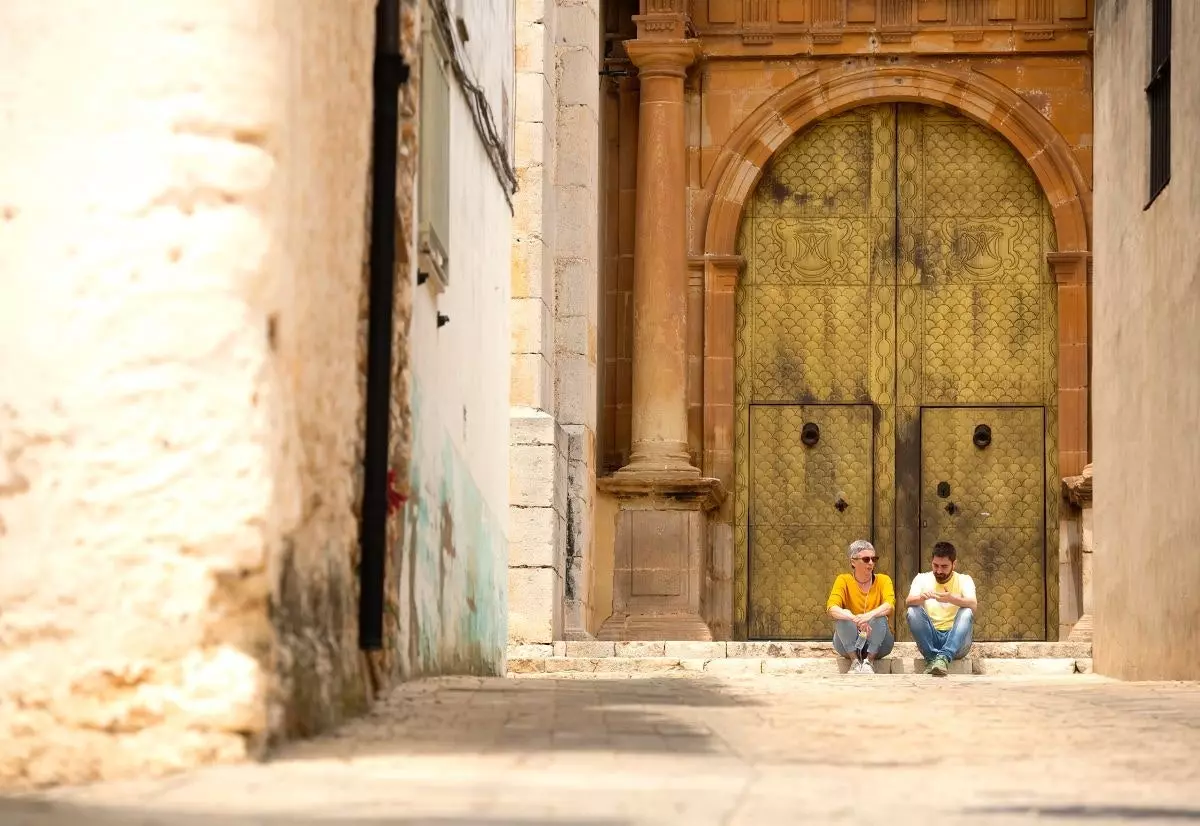
Sitting at the door of the parish church of Benlloc
There are still uncharted territories from the tourist point of view in our country. The Plane de l'Arc, in Castellon, It is one of them. The Roman arch that gives it its name is today in a roundabout. It is still shocking, it must be said, but, after all, it was also built at a crossroads, next to the Via Augusta, the longest Roman road in Hispania, which linked the Pyrenees with Gades (that is, Cadiz).
The old layout of this road weaves the seven villages (Benlloc, Cabanes, Le Coves de Vinromà, La Torre d'en Doménec, Vall d'Alba, Vilfamés and Vilanova d'Alcolea) of this valley parallel to the Mediterranean coast and separated from it by a mountain range that goes from Peniscola until Benicassim . Inland are the towns of La Plana, where time (and any journey) passes at a different pace.
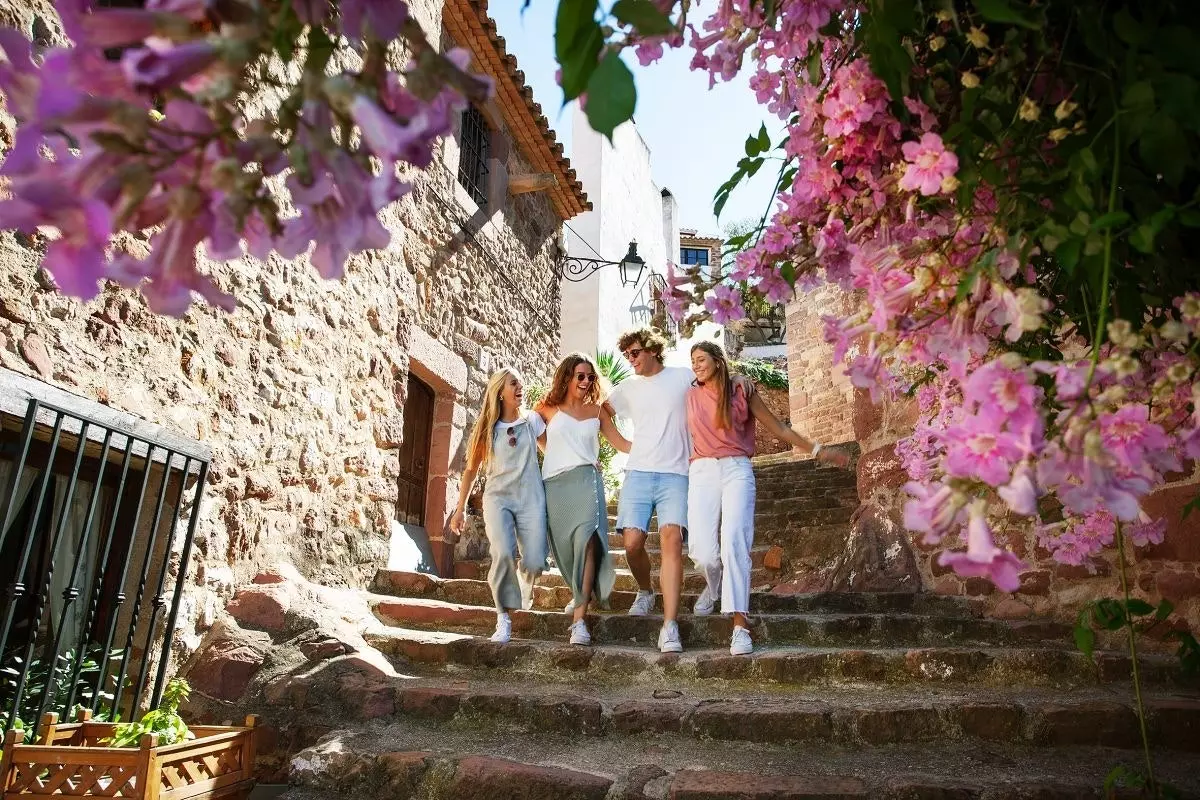
Old town of Vilafamés, medieval town in the Plana de l'Arc, in Castellón.
A good way to start discovering the territory is tour it by bike. You can rent one with Ecokm Bike and leave on your own or let companies like La Saria either Viu Experiences. You will see that it is an agricultural area in which Almond fields abound. They replaced the vine decades ago, but now the vineyards are gradually returning to the place they once occupied.
Other elements that are also part of the Rural landscape de la Plana de l'Arc have been preserved, although today they have lost the function for which they were conceived. I mean the laundries, like the one in the Fountain of the Three Pipes, in Benlloc. It was recently restored and it is spectacular, with its two huge stone basins that keep the slabs on the edges very smooth with such a shine that women's hands have been giving it for centuries when rubbing their clothes. **
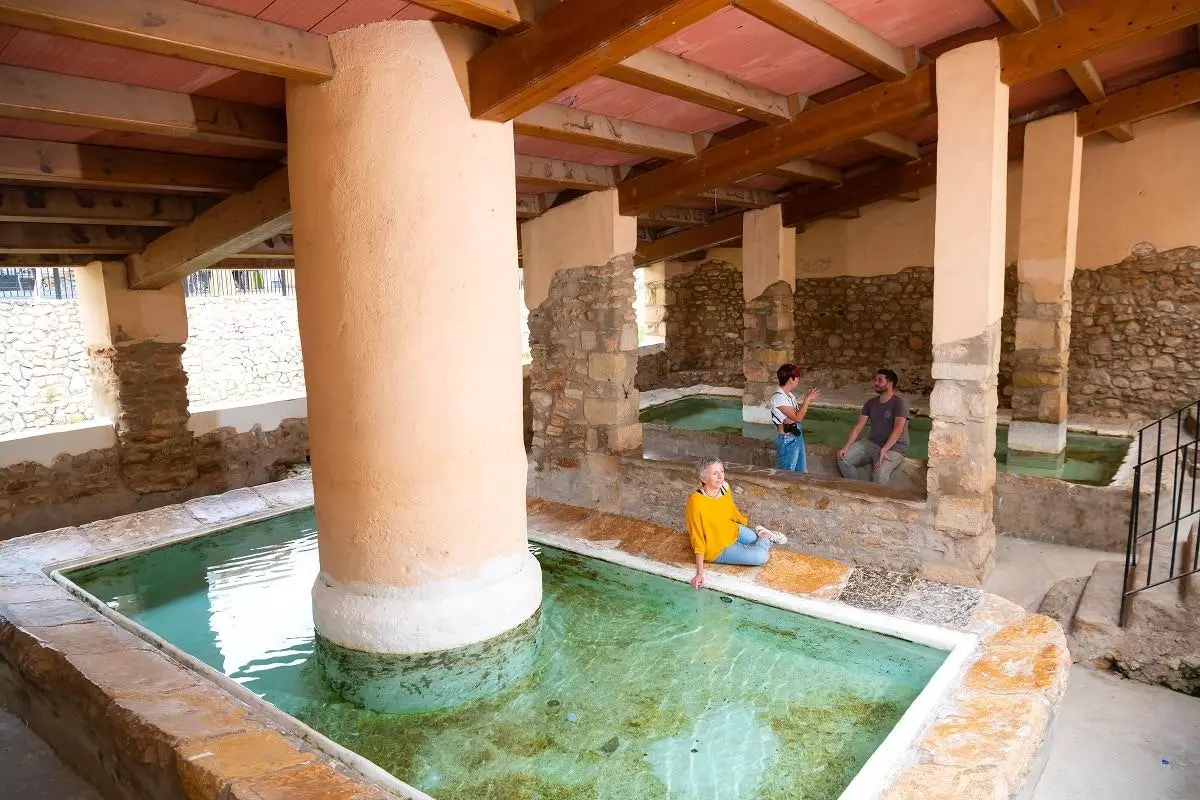
Recently restored, the laundry room of the Fuente de los Tres Caños reminds us of the atmosphere of these ancient meeting places.
Water, by the way, it can be a common thread for your tours of this territory. In addition to these sinks, fountains and troughs, you can follow the Route of the Sénias. A senia is a waterwheel, a hydraulic device that allows water to be drawn from a well. The Arabs perfected the design of these instruments and adapted them for the exclusive use of irrigation.
Throughout the Plana de l'Arc you will find these waterwheels but especially in the town of Vall d'Alba, where there is a six kilometer route that you can walk or bike and that allows to know how these mills worked and what other elements were built in relation to the horticultural and irrigation culture, such as wells, dams, canals, cisterns or cisterns.
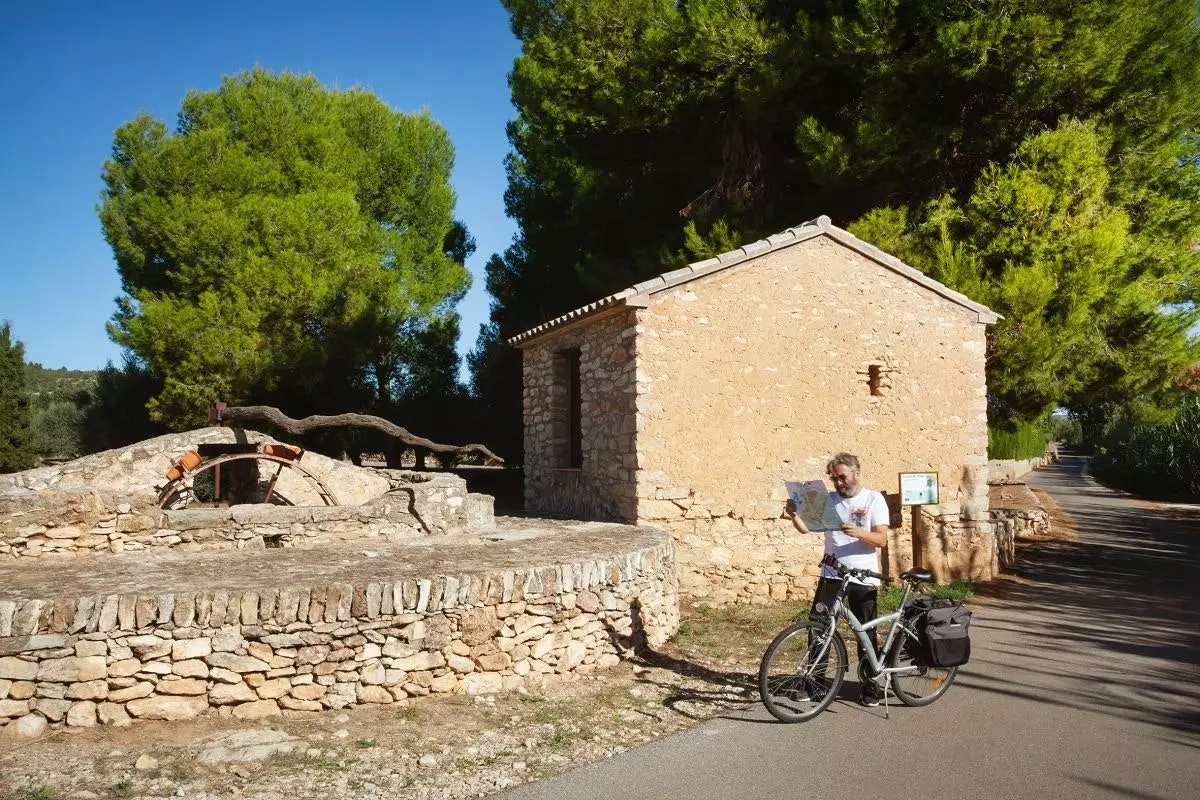
The Route of the Senias, or of the waterwheels, leads you for 6 km along the water paths.
The route begins at the entrance of the town, in what was the resting place of the Pou Ample, a crossroads where a well was dug to supply water to the local cattle and the migratory, and where both the animals and the shepherds who came down from the mountains of the Mastership.
The well is still here, with its curb and everything, but what has disappeared are the many watering holes it used to have. In this same place it does continue the Senieta, another well, intended in this case for human consumption, and the waterwheel, of course: the Senia del Rosso. From here the route enters through the cultivated fields, Following the Regall, the stream, where fig trees, cane fields or different plants and trees grow, account for the water that runs through the subsoil.
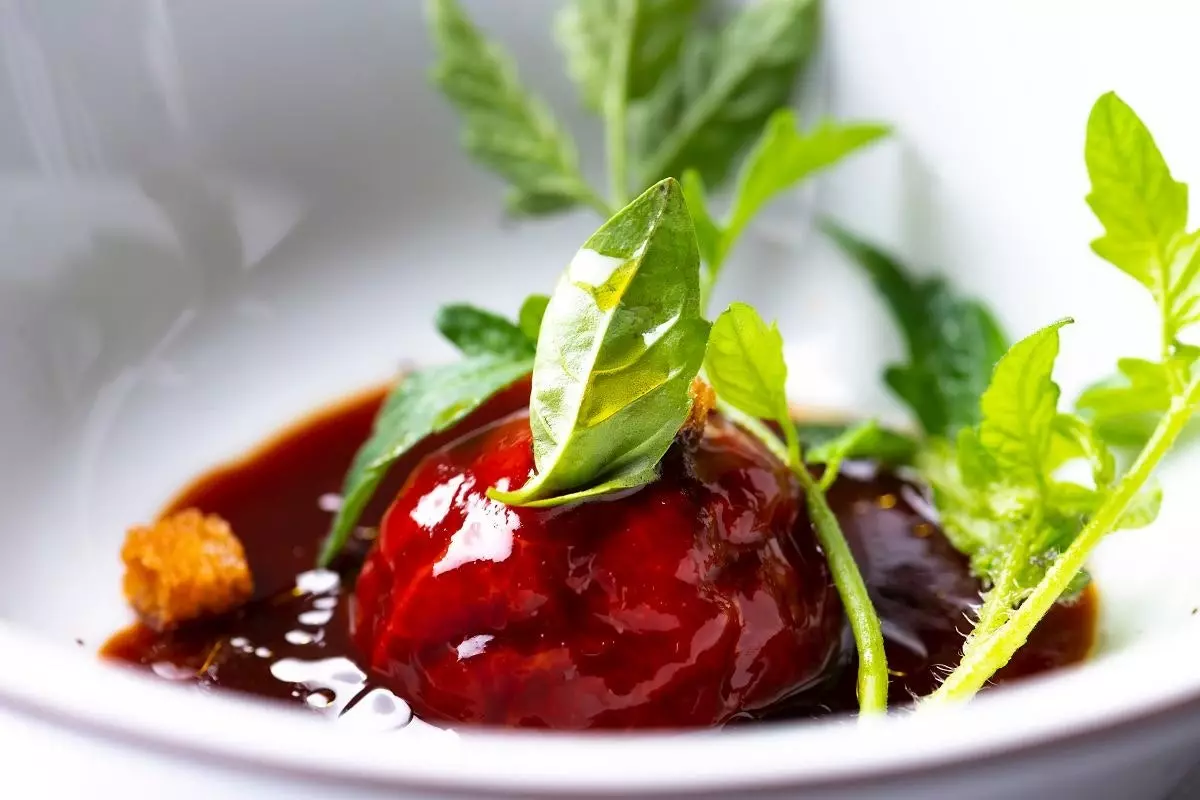
In Vall d'Alba you eat that well. At Cal Paradís, chef Miguel Barrera has a Michelin star.
But the territory of the Plana de l'Arc It also has part of the coast, so the theme of water continues by the sea in Cabanes, either on its beaches or in the Prat de Cabanes-Torreblanca Natural Park, a narrow coastal strip of marshes and swamps, which is the main area of wetlands in the province of Castellón.
Near here, in salt tower, You will also find one of the fortress watchtowers of the region. The Salt Tower, like the others, was built on the coast during the 15th and 16th centuries to warn of the arrival of pirates, but its location (and its name, of course) is also related to the ancient salt pans that existed here in Roman times , as well as with the salt tax from Peñíscola, the tax paid to the feudal lord in the Middle Ages.
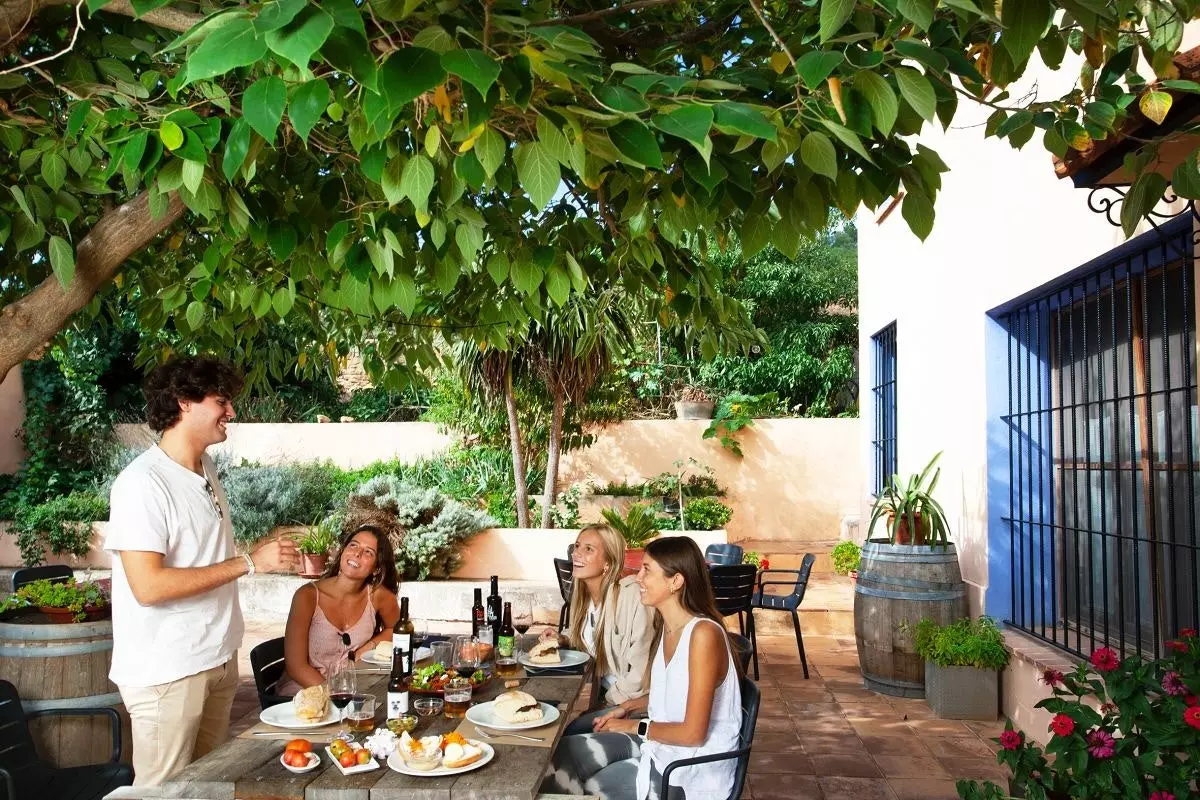
In the Pou de Beca agrotourism restaurant, everything you try is from Km 0.
Medieval and from earlier times are many of the olive trees that populate this region. Some of the specimens that we can see in these terraced mountain farms have nothing to envy to the most famous of the neighboring Maestrazgo. They are large trees, with twisted trunks and branches, and native varieties such as farga, canetera, sevillenca or borriolenca that give different oils and that, probably, you have not tried until now, so do not hesitate to get a bottle.
And this brings us to the gastronomic section. In scholarship pou, a agrotourism in the part of the Vall d'Alba mountain range, you will be able to taste, precisely, different oils from the area. Nico is in charge of this business, which is based on contact with and enjoyment of nature, traditions and the region's heritage, especially through gastronomy. That's why follow the philosophy of slow food and his cuisine is based on preparations with seasonal, proximity and kilometer 0 products. Get ready for the surprise of intense flavors!
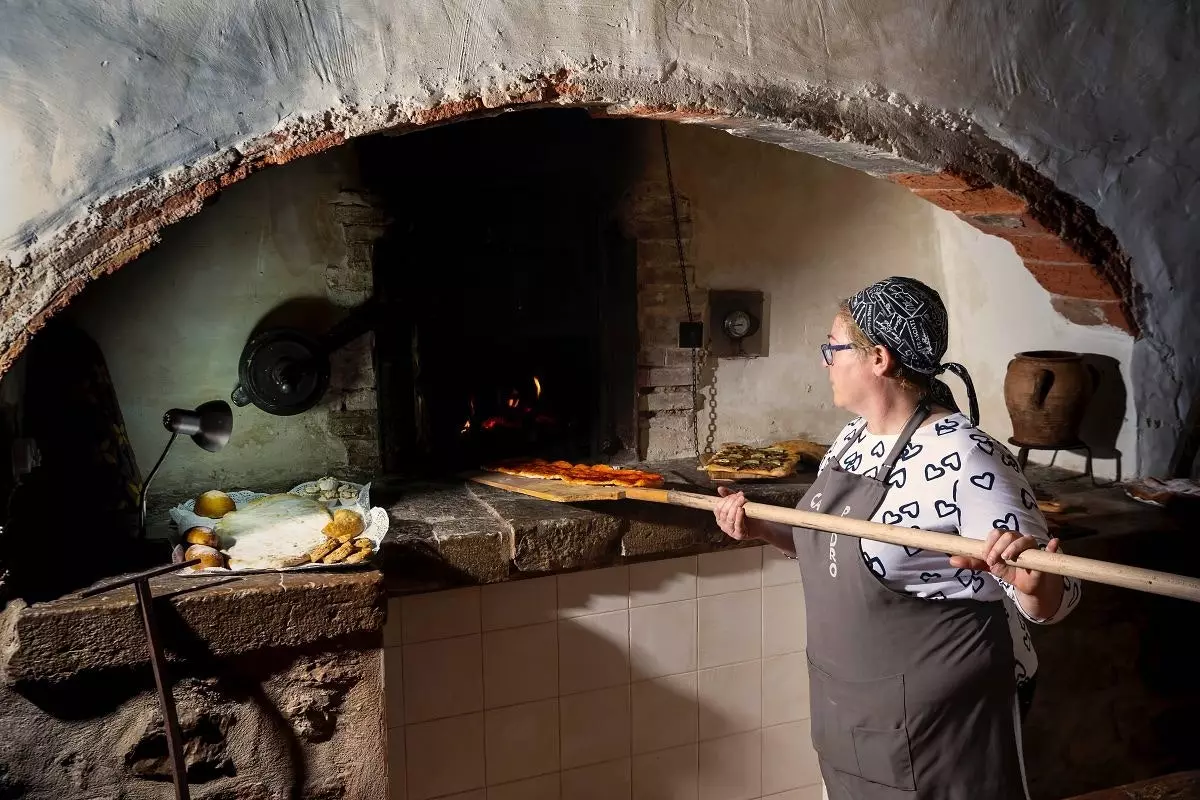
Susana gets to work, making her mythical red coca, at the Forn Ca Pedro.
With a similar philosophy but with a more creative cuisine and located within the avant-garde trends you will find, in the center of town, Cal Paradise. The dishes of menus of this Michelin star they adapt to the products of each season but there are some that the Chef Miguel Barrera can't withdraw, like the Penjar tomato with sardines and grilled garlic. Also don't miss the bread they make themselves.
As for the products, in addition to the oils, you should not miss the nougat and marzipan of Agut nougat, in Benlloc, where there is also the Forn Ca Pedro. Everything here is handmade and comes from a wood oven in which Susana makes sweets and cocas taken from old traditional recipes . The star product is red Coke, a coke with paprika that is one of those things that you never get tired of eating, you know...
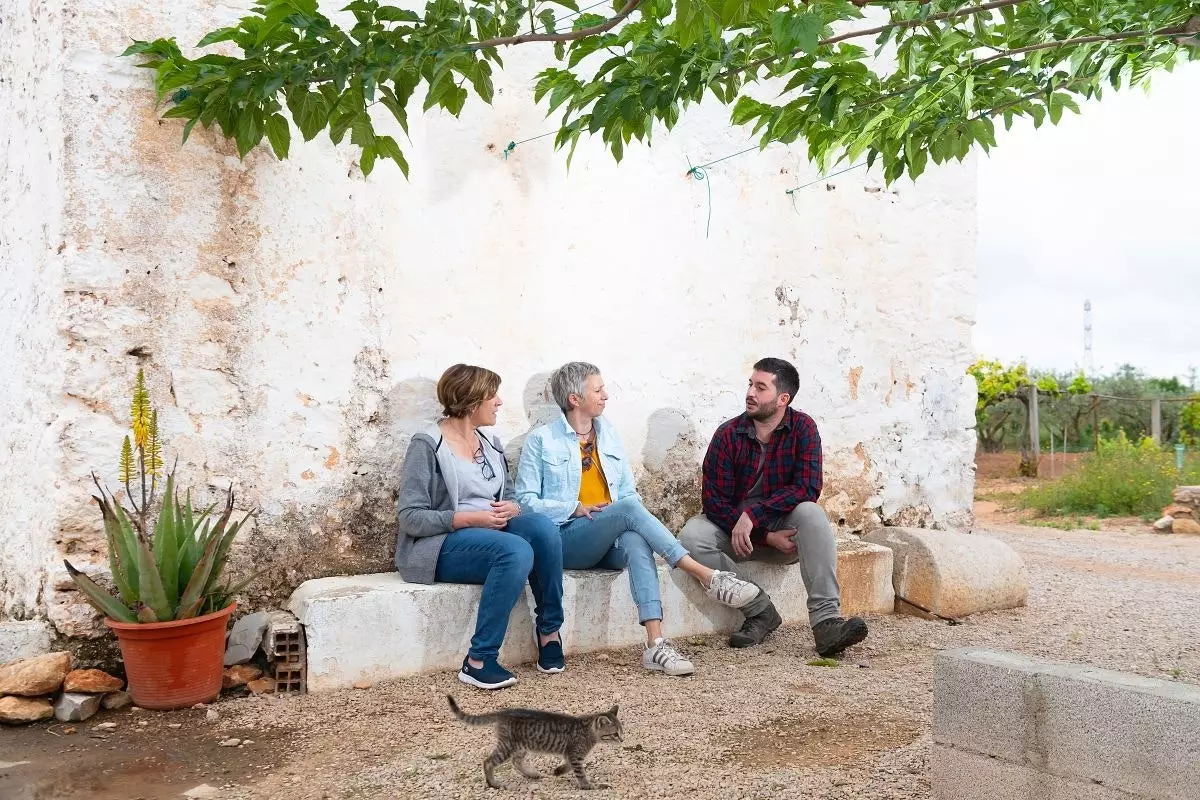
At Masía Pepi, the Centelles winery is one of those places to be, without more, and where to taste their wines.
Between Benlloc and Vilanova d'Alcolea you will find the Mas de Rander winery, also open to wine tourism; and in Les Coves de Vinroma you have to visit the Tot de Poble cheese factory, where Óscar and Mayte make some amazing cheeses that you can try in the tastings-tasting that they organize and in which it will not be strange that you fall in love with someone like the old one, something normal, of course, because a few years ago it won the second prize for Best cheese in Spain.
Apart from all this, you should know that in Castellón there are a gastronomic product that is almost a religion: the darling they call it creamet because when preparing it, they partially burn the alcohol (rum, brandy or cognac), the sugar, two coffee beans and (depending on the area) a piece of lemon rind. Then, the coffee is added and served very hot. To savor slowly, like every element of this journey...
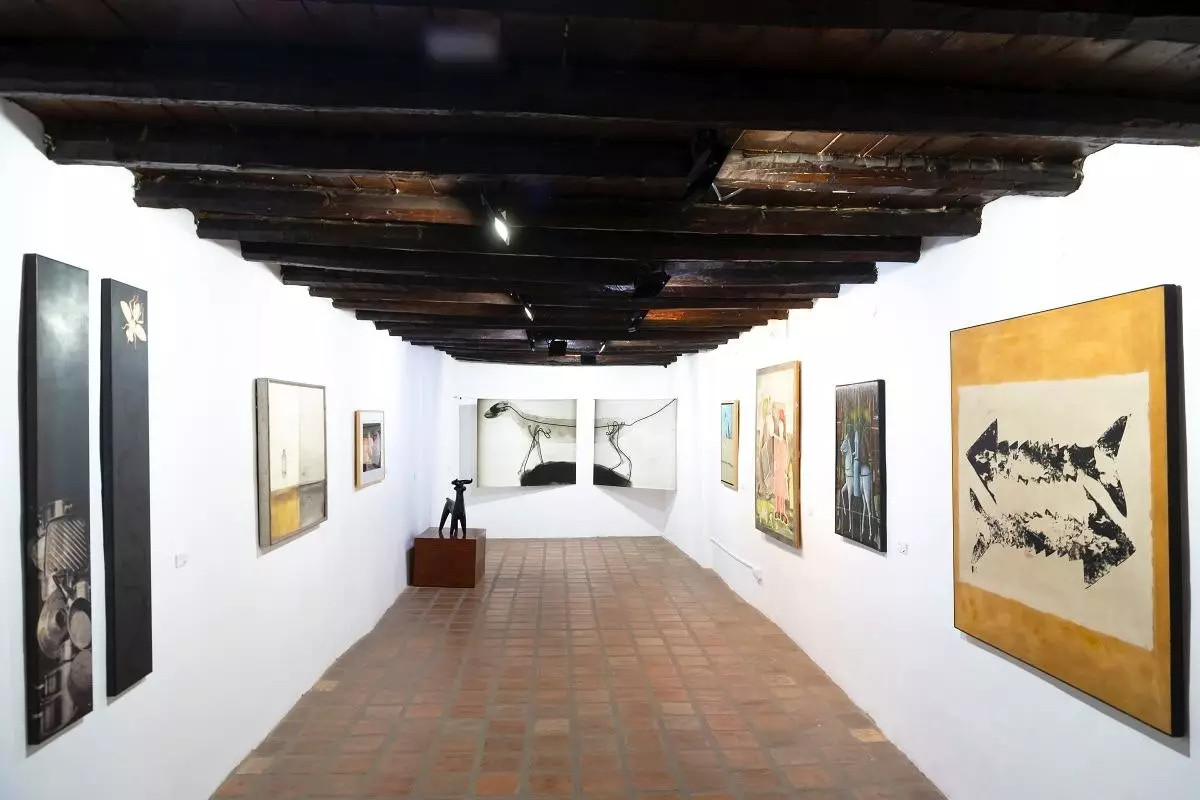
A 15th century palace houses the interesting MACVAC, an incredible museum of contemporary art.
Vilafames It is the last stop on the itinerary. Take it easy because there is a lot to see and, furthermore, as the town is on top of a hill, you have to climb hills. The castle, with its striking circular tower and its reddish walls, it finishes off the historic complex in which the medieval layout of the streets is preserved but where there are also buildings of Gothic or Baroque architecture, such as the Palau del Batle, a splendid 15th-century palace that has ended up housing one of the most attractive museums in the country, the Museum of Contemporary Art Vicente Aguilera Cemi, MACVAC.
It all started in the late sixties when the art critic and essayist Vicente Aguilera Cerni proposed to the mayor the creation of a monographic museum of contemporary art. The first exhibition had only 15 works. Today the collection is made up of some 700 works of leading national and international avant-garde artists such as Pablo Picasso, Andy Warhol, Olga Adelantado, Eusebio Sempere, Joan Miró, Soledad Sevilla, Pep Agut, Dora Maar or Juan Genovés, among many others. The tour increases the attraction because the building preserves all the rooms of the old palace, so it becomes a huge labyrinth in which each new room (all different) hides some more unexpected work than the previous one. **In case anyone thought that the surprises in the Plana de l'Arc were over... **
